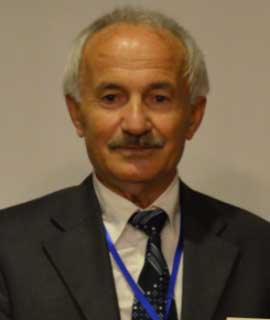Title : Basic lattice reactions in memory behavior of shape memory alloys
Abstract:
Some materials take place in class of smart materials with adaptive properties and stimulus response to the external changes. Shape memory alloys take place in this group, by exhibiting shape reversibility and capacity of responding to changes in the environment. These alloys exhibit a peculiar property called shape memory effect. This phenomenon is initiated by thermomechanical treatments with cooling and deformation and performed thermally on heating and cooling. With this deformation, strain energy is stored in the materials, due to the plastic deformation and released on heating by recovering the original shape. Shape of the materials cycles between deformed and original shapes on cooling and heating after the first processes in reversible way in bulk lecel, and this behaviour can be called thermoelasticity. These alloys exhibit another property called superelasticity, which is performed mechanically with stressing and releasing at a constant temperature in parent phase region, and shape recovery occurs instantly upon releasing, by exhibiting elastic material behaviour. Stress-strain profile exhibits nonlinear behaviour and hysteresis loop refers to energy dissipation. Thermoelasticity is result of two crystallographic transformations, thermal and stress induced martensitic transformations. These transformations are governed by the basic lattice reactions, twinning and detwinning. Thermal induced martensitic transformation occurs on cooling with the cooperative movement of atoms in <110>-type directions on {110}-type planes of austenite matrix, by means of shear-like mechanism, along with lattice twinning, and ordered parent phase structures turn into twinned martensite structures. Twinned martensite structures turn into detwinned martensite structures by means of stress induced transformation by stressing material plastically in martensitic condition. Superelasticity is also result of stress induced martensitic transformation and ordered parent phase structures turn into the detwinned martensite structure with stressing in parent phase region. Copper based alloys exhibit this property in metastable β-phase region, which has bcc-based structures. Lattice invariant shears and lattice twinning are not uniform in these alloys, and cause to formation of the layered structures with martensitic transformation. The long-period layered structures can be described by different unit cells as 3R, 9R or 18R depending on the stacking sequences on the close-packed planes of the parent phase.
In the present contribution, x-ray diffraction and transmission electron microscopy studies were carried out on copper based CuZnAl and CuAlMn alloys. X-ray diffraction profiles and electron diffraction patterns exhibit super lattice reflections inherited from parent phase. X-ray diffractograms taken in a long-time interval show that diffraction angles and intensities of diffraction peaks change with the aging time at room temperature, and this result refers to a new transformation in diffusive manner.
Keywords: Shape memory effect, martensitic transformation, superelasticity, thermoelasticity, lattice twinning and detwinning.
Audience Take Away:
- Shape memory phenomenon is a multidisciplinary subject and used in many fields from biomedical to building industry.
- I will introduce the basic terms and definitions, by addressing to all at the conference from different disciplines, and listeners will gain knowledge in elementary level.


